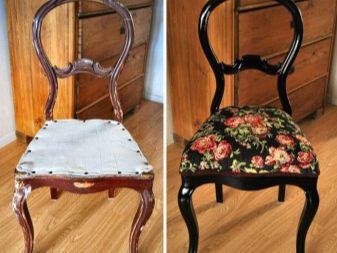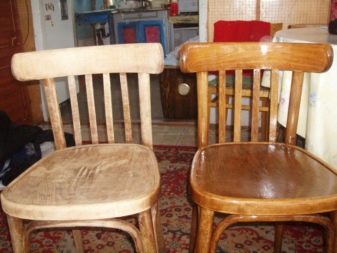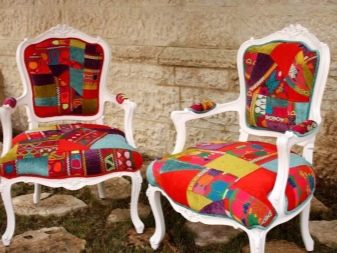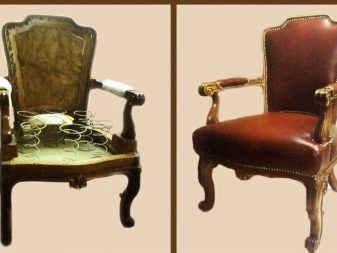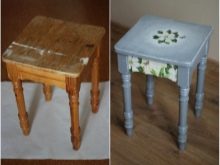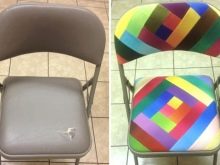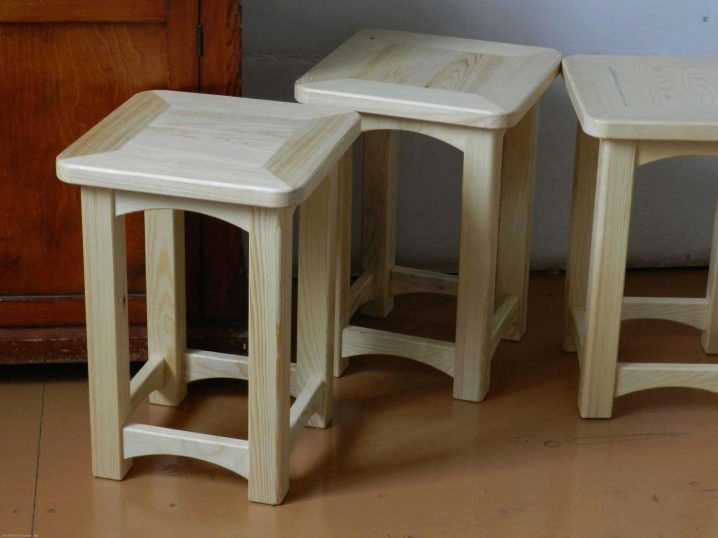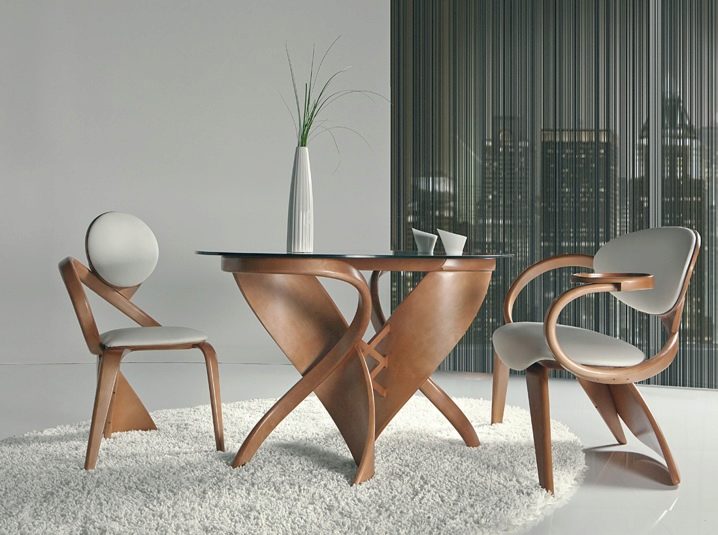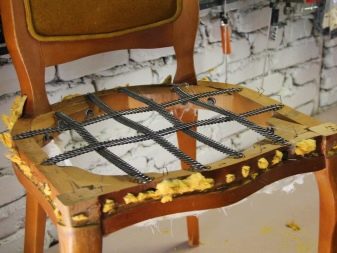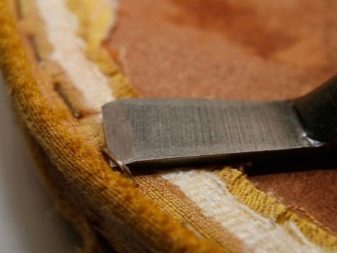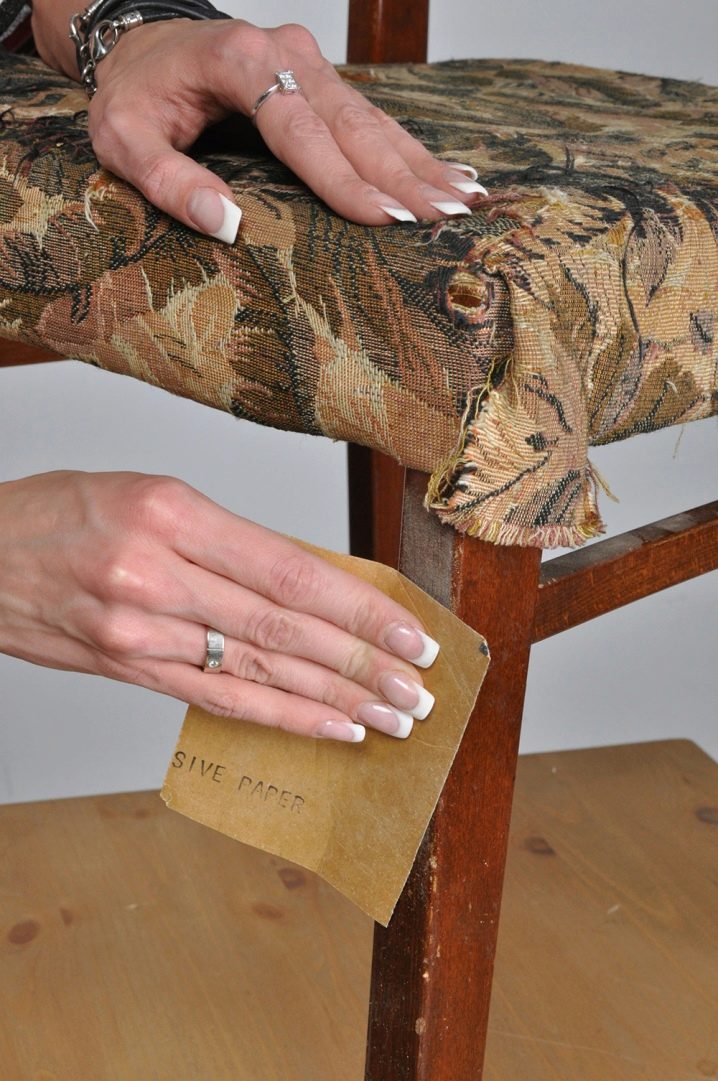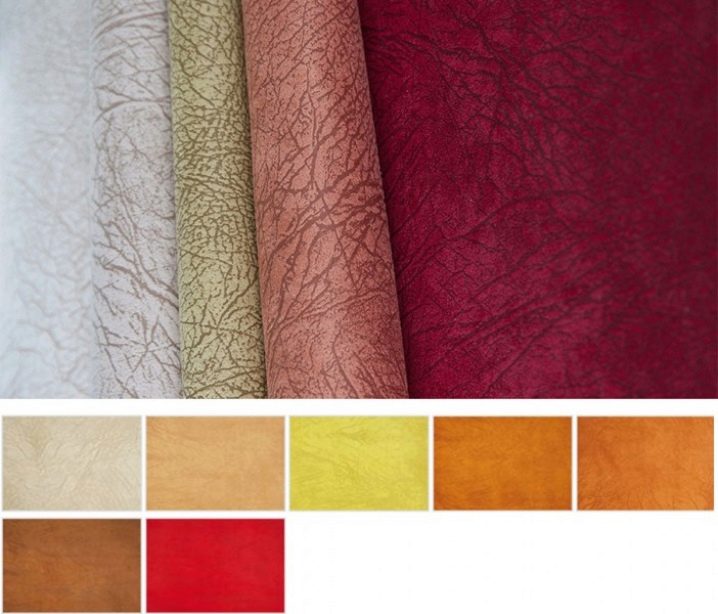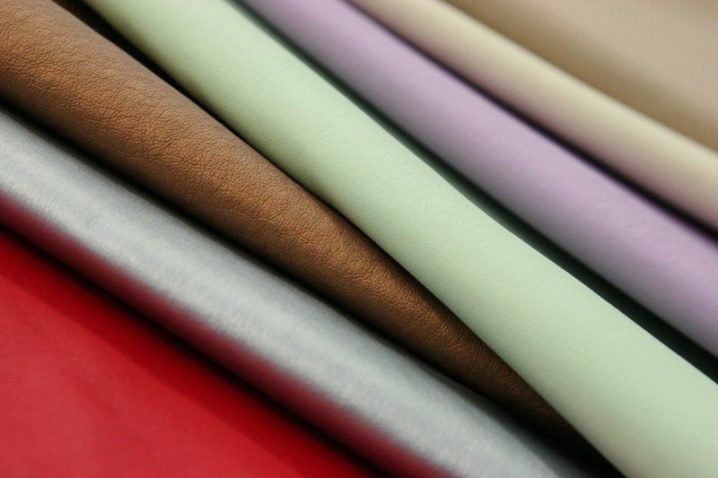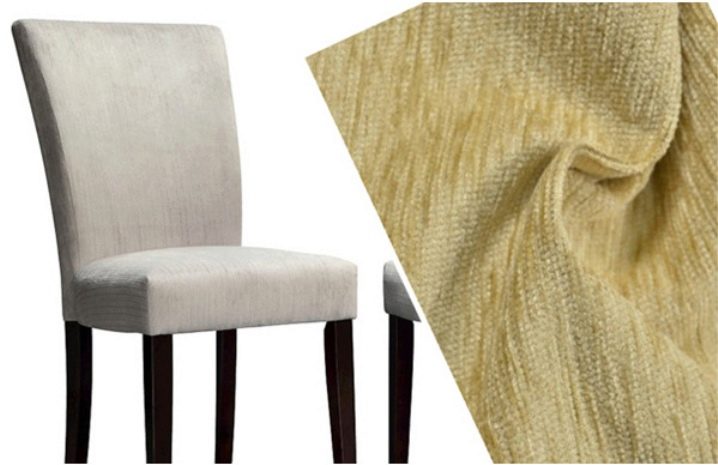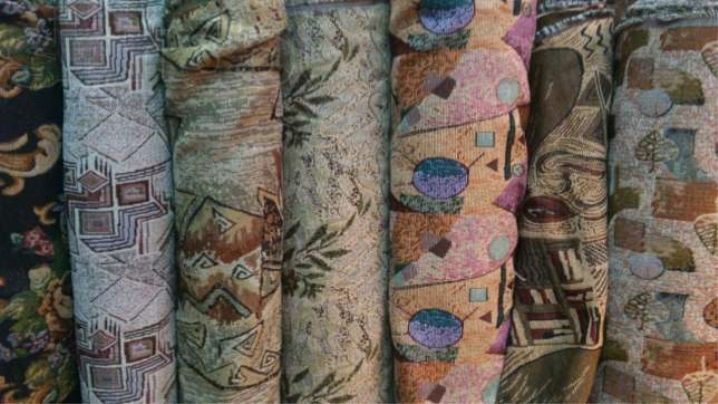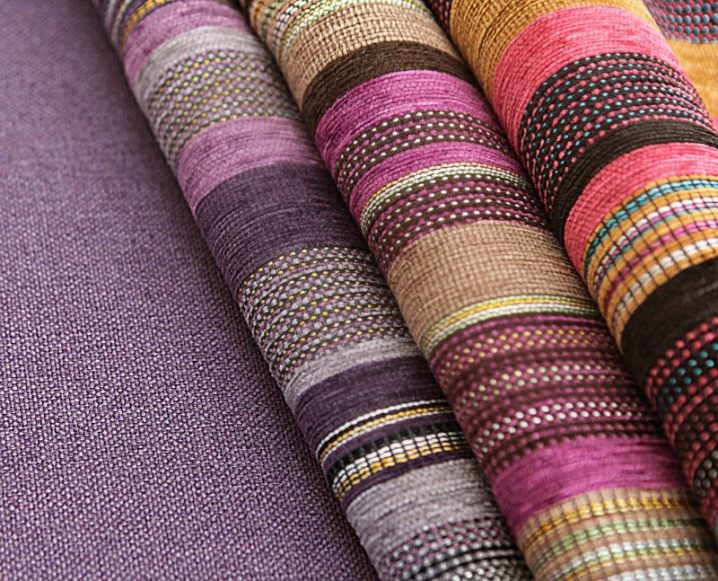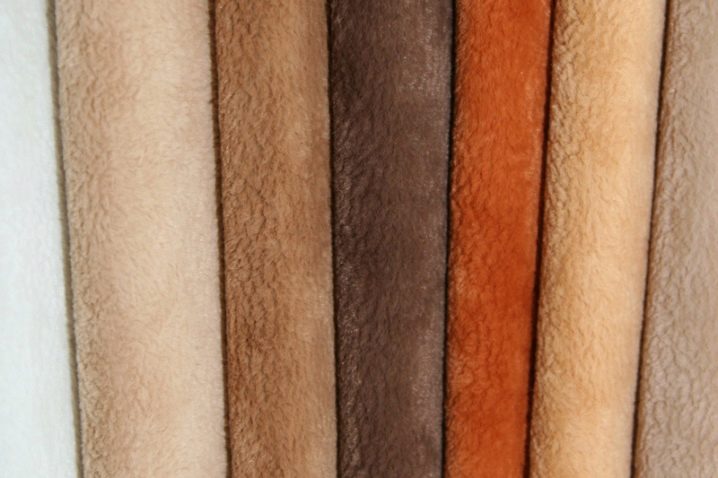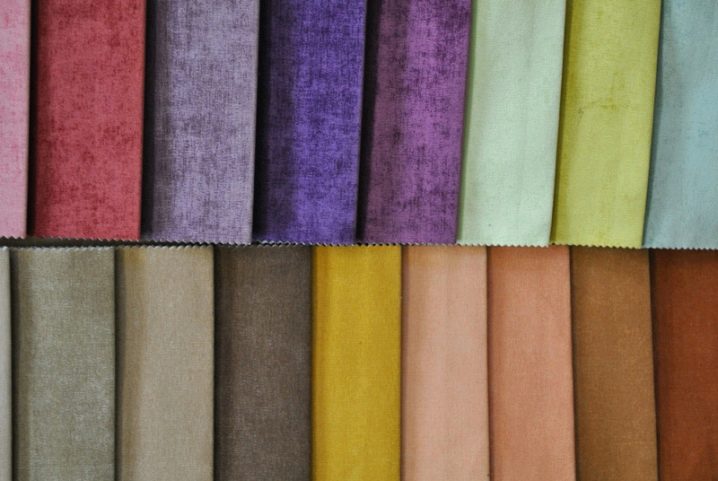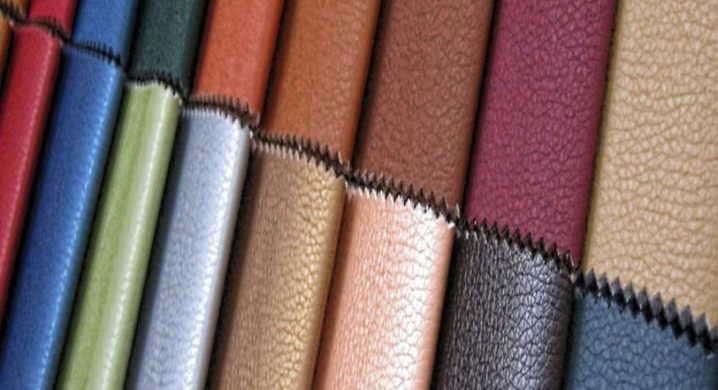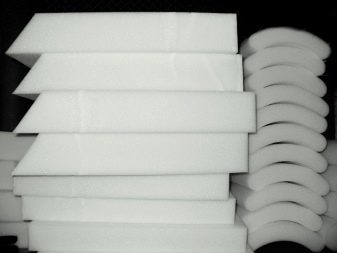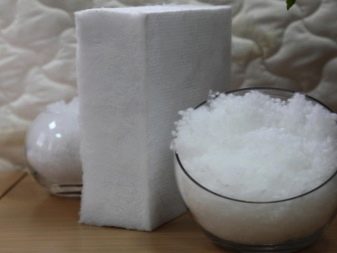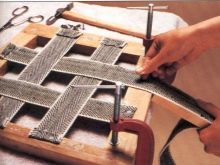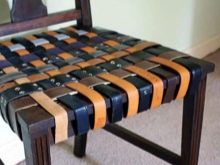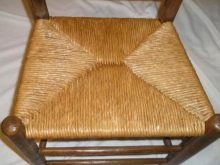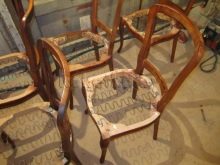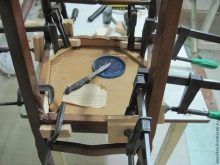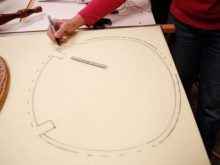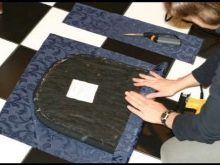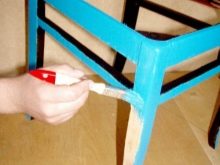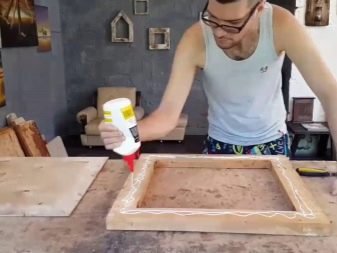Hauling chairs do it yourself
Old furniture in the house usually leads to melancholy and despondency. Holes and scuffs in the upholstery, peeling paint and unfashionable design cause a desire to escort the annoying interior items to the nearest dump. And let the new chair shaky and unreliable, but how many positive emotions from the renovation of the interior. But you can get much more pleasure by giving a second life to the old thing. Creative potential is in each of us, and some tips will help to realize it.
Ways to restore old furniture
Restoration of old furniture is a laborious, but undoubtedly creative process. The use of various techniques, the wealth of choice of materials and their combinations allows you to get a unique thing. The methods used in the repair depend on the type of furniture and the extent of its damage,but it unites all of them the preparatory stage: the removal of the old coating from the surface of a wooden product in any available way, for example, with emery paper, starting from a more coarse and finishing fine-grained.
- Traditional furniture renovation methods are considered varnishing and staining. In this way, you can update the coverage partially or completely.
- Another popular and inexpensive way is lamination, that is, covering the surface with a film. It is more suitable for smooth surfaces. When gluing it is important to start the movement from the center, gradually moving to the edges. This will avoid unaesthetic bubbles.
- Veneer Coating - This is a more professional type of restoration. Materials will require special glue, iron and the sheets of veneer itself. The technology is not very complicated - 2 layers of glue are applied to the surface, a veneer is applied and ironed from the center to the edges with an iron. The method is somewhat similar to the previous one, but the result looks much more noble.
- From fashion trends in furniture renewal, more preference is given to technicians. decoupage, craquelure, painting.
If upholstered furniture, for example, a chair, becomes the object of restoration, then, in addition to basic measures, it is likely that you will need to change the upholstery.When updating soft surfaces, it is sometimes sufficient to simply alter the decorative fabric. But most often under the cover are hidden internal damage that require major repairs.
What features of chairs need to be considered when restoring?
Before proceeding with the repair, it is important to determine the type of chair, its purpose and design features. It is necessary to assess the visible damage and try to predict the likely internal. This data will help you understand what tools and materials we need. Next will be considered several classifications.
By appointment, there are the following groups:
- For home. This group includes chairs in the kitchen, for the living room, study and other rooms. Most often they are universal and are used in any room of the apartment;
- For the street most often make models of plastic and polymers. There are examples of wooden outdoor chairs, but they must be treated with moisture-resistant impregnations;
- Office chairs are mobile, have a back and sometimes armrests, are equipped with height adjustment;
- Bar Stores chairs have a height of up to 80 cm, come with back and without.The seat of the bar stool is often round, the presence of upholstery depends on the model.
According to the method of manufacturing the frame are such chairs:
- Carpentry chairs - the simplest to manufacture, which were made on the lessons of work at school;
- Turned - so named because all the elements of circular cross section are made on the machine;
- Bent chairs do on special equipment. Wood is treated with steam, give the desired shape and dried;
- Cast or stamped models are made from metal or plastic.
The type of seat chairs are divided into the following options:
- Hard. These are models without flooring;
- Semi soft These include chairs without spring unit with foam rubber 2-4 cm;
- Soft chairs. For elasticity, they are equipped with springs and a layer of foam rubber, the average thickness of which is 3-5 cm.
According to the presence of armrests:
- Chairs with armrests can be hard or soft with leather or textile trim.
Remove old upholstery and frame inspection
The initial stage of the constriction of the chair is his disassembly. Removing every detail, remember and mark what was where, it will facilitate the assembly of the finished product. First you need to remove the seat, for this you need to remove all fasteners (bolts, nails, brackets, metal plates). Similarly, the analysis is carried out back if it is.
After that, you should inspect the frame of the chair for the presence of hidden damage, cracks, loose joints, check the condition of the springs, which have become unusable are easily replaced with jute tape. Next - analysis of the seat and back: remove staples and carefully remove the finishing fabric and filler. Throw them away immediately not worth it, because for them it is easy to make a piece and measure the approximate consumption of fabric. The plywood base must be cleaned from the remnants of foam rubber and glue, if it is cracked, then cut a new one. The next stage is the preparation of materials and tools.
How to choose materials?
Assessing the scope of work, you can proceed to the compilation of a list of materials. Upholstery change usually requires the use of the following materials.
Upholstery fabric
The choice of upholstery is entirely a matter of taste of the master and interior features. But there are nuances: not any fabric is suitable for a chair waist at home.
Therefore, you need to follow a few recommendations:
- The aesthetic look of the future cover should be combined with practicality. You should avoid options with a sharp smell and fading. Probably used in the production of low-quality, toxic dye.
- Thick fabric with a nap will help the beginner to hide the flaws in the upholstery. In this case, cutting out the details, it is important to take into account the direction of the pile. If you forget about this feature, the color of the details in the final product may differ.
- To save on fabric consumption, you should prefer a smooth material with a small abstract pattern. This texture and texture allows you to place the patterns economically, in any direction.
- If the highlight of your design should be a pattern or a large ornament, then get ready to buy more fabric. In this case, the direction of the lines is important when cutting. The mismatch of the pattern on the seats and back stands out sharply and looks sloppy. For example, if the red stripe abruptly turns into blue, or the details of the ornament are offset relative to each other.
- Choosing decorative upholstery, consider the purpose of the chair. For example, for kitchen chairs, you should choose a durable and easy to clean material.
- Faux leather upholstery will add solidity to the furniture, but it will not be much more durable than other types of fabric.
These tips do not imply limited choice.
Upholstery fabrics can be varied:
- The most common fabric in the production of upholstered furniture is tapestry. This fabric has two layers, it has a rich texture and texture. But she conquered the furniture makers not only with beauty, but also with strength, durability and practicality. It can be washed, it does not fade in the sun. Tapestry has antistatic properties, due to which dust is not collected on its surface.
- Another popular option is chenille. This is a beautiful, affordable fabric made from fluffy chenille filaments. The canvas, woven from such a thread, turns out to be voluminous, but to the touch it is soft and velvety. Using chenille yarns in various types of weaving (tapestry, jacquard, satin) allows you to get interesting textures, and a combination of different colors (their number sometimes reaches eighteen) creates unique patterns. The best option for hauling chairs at home are samples with a mixed composition. The presence of artificial fibers increases the wear resistance of the fabric. The main drawback of chenille is hygroscopicity: water stains on it and its deformation is likely, therefore it is not suitable for kitchen chairs.
- Flock - It is an artificial analogue of velvet. It meets all the requirements of upholstery fabric: a pleasant appearance, durability, ease of care (easy to clean with water), not afraid of animal claws.
- Velours - one of the most expensive and impractical upholstery fabrics, velvety to the touch, effective, but quickly wears out. Suitable for furniture that is rarely used.
- Pulling the chair genuine leather, you get a practical thing for many years. But this material is quite expensive, so the imitation leather is offered to the consumer: eco-leather and dermantin. Kozham adopted the external characteristics of real leather, but is inferior in quality. Upholstery leatherette survive from 2 to 5 years, depending on the intensity of operation. Perhaps hauling eco-leather will slightly increase the life.
Filler
For hauling soft chairs at home, the choice of filler is not so great: synthetic winterizer or foam rubber. Having stopped on a synthetic winterizer, pay attention to its color and a smell. A non-white shade, as well as the presence of a strong odor, signal the use in the production of second-rate or toxic raw materials. Check the structure of the material and its strength.The canvas of uneven thickness and density, which is easy to break with your hands definitely will not work. A suitable foam rubber is easily distinguished by its structure: the smaller the bubbles, the higher the density and quality. In order not to be deceived by the seller, make sure that when pressing the specimen does not emit cod (artificially sealed cells burst).
- If the chair is spring-loaded, you may need jute tape. She can replace the springs become useless.
- Elements for decoration: ribbons, lace, cords, buttons and other.
- Cardboard or thick pattern paper.
- Primer, paint, varnish or stain for the frame.
- Plywood sheet.
- PVA glue.
Preparation of tools
From the tools, the following will come in handy:
- Furniture stapler with staples or a hammer with furniture nails;
- Screwdriver, pliers, nippers, side cutters;
- Measuring tape, scissors, ruler;
- Durable sewing thread (Titan recommended);
- Sewing machine.
Replacement process step by step
- Repair of the frame. The old coating is removed, all the cracks identified during the inspection are carefully glued, chipped are spattered. Loose joints are sealed, for example, due to the inserted wedge, and additionally fixed with glue.The failed springs are removed; jute strips are fixed in their place in a checkerboard pattern. If the bottom is plywood, then, depending on the state, it can be exchanged for a new one or cleaned of residues of glue and filler. The frame is covered with paint, varnish or stain or one of the modern decoration techniques is used. In order for a new coating to last longer, the surface should be treated with a primer before painting. White primer is suitable if you are going to use paint, colorless allows you to save the wood pattern, therefore suitable for varnishing. After the primer dries, the surface is ground and painted with at least 2 layers.
- While the frame dries, it is produced seat pereobivka. First of all, parts are made of fabric and foam rubber. If the old upholstery as a template can not be used, then the pattern is made of cardboard. To do this, plywood base around and add 2-4 cm on the allowances. Using a clerical knife, a filler is cut. Then a fabric pattern is made for the same pattern. Remember that the displacement and inconsistencies of the picture are not allowed. When cutting fabric, leave allowances of 10 cm for hem.
- Next step - seat close up. If the seat is a separate part, then a filler is glued to the upper side of the base. When the glue is dry, fold the upholstery fabric inside out and cover with a seat with foam side. Make sure the base is positioned correctly with respect to the pattern or design. Consistently nail the edges of the fabric to the base with the help of a furniture gun (a step of 1-2 cm), trying to avoid large folds. This stage is difficult to perform independently, because the fabric must be tightly and evenly tightened on all sides. Here it is important to observe the "golden mean": when too tight, the foam rubber deforms and wears out faster. Cut off excess fabric. If the seat is inseparable from the frame, then all manipulations are carried out immediately on the chair, while if there are springs, it is desirable to close them with a thick cloth, for example, a sack cloth, and to place the filler on top of it.
- Next - the back. Actions are almost identical to the previous step. Before sheathing the non-removable backrest, drag it with linen from jute, then cover with burlap and attach the filler. If you want to decorate the back with a carriage fastener, then cut the holes in the foam rubber and fabric where the furniture buttons will be inserted.
All steps described above are applicable also when the restored chair initially did not have a soft seat.
Assembly and finishing
All parts are ready, so you can proceed to assembly. If during the dismantling of the chair it was recorded and noted what and how it should be fixed, then there will be no problems. Simply glue and screw all the parts in the reverse order. Now it remains to finish and decorate the finished product. Ugly back of the back should be closed with a cloth, carefully sewed along the edge. The bottom must also be hidden. The seams can be decorated with braid or decorative furniture nails, lace or even beads. It all depends on your imagination.
Examples and options
About traditional methods of restoration was described in detail above, but no one has canceled the creative. If you have several unnecessary leather belts, then use them for upholstery. They need to twist in the form of a basket and fasten the bottom with screws. Interesting results can be obtained using the patchwork technique. The main thing is that the tissue characteristics of the flaps meet the requirements of upholstery fabric. For a more strictly interior you can use pastel-colored patches.The frame instead of staining can be braided with twine. From the thick and durable rope, some craftsmen even weave seats.
Conclusion
Summing up, we can say that dragging an old chair with your own hands is quite a doable task.
The main thing is to follow a few rules:
- When disassembling it is important to note the order and features of fastening parts;
- The choice of material depends on the purpose of the chair. In any case, it is better to give preference to universal fabrics;
- It is desirable to evaluate the quality of the filler before the purchase, and not after a week, when the chair again shed;
- Fuss and haste in such work are superfluous. Each stage must be thought out and carefully executed.
You will find a master class on hauling chair in the next video.


